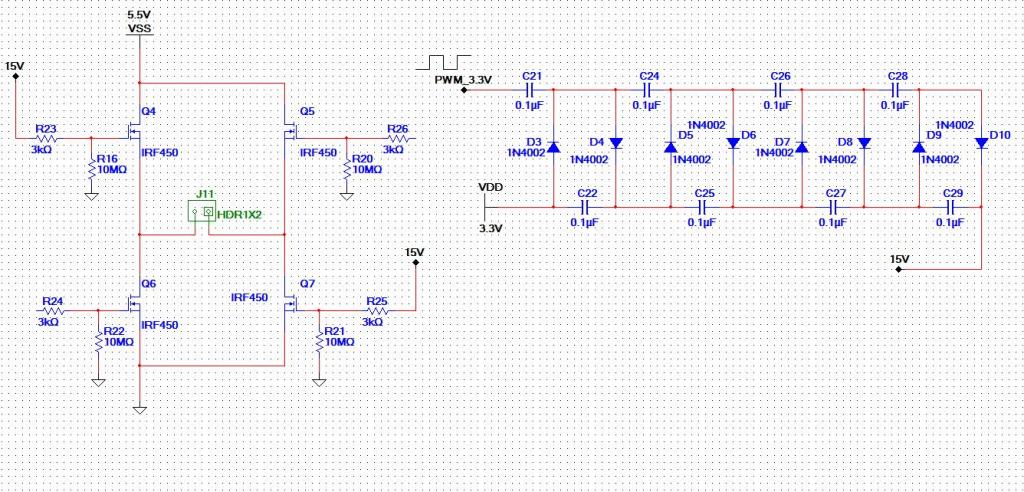integrating the propeller with a power mos h bridge.
I am designing a circuit board and I am stumped!
Using the propeller and several other digital devices that operate on 3.3Volts, its is one of my restriction to this circuit. My problem is driving an h-bridge using power mosfets with a 5volt 10amp power supply and the propellers 3.3v. You can imagine that the gate of a power mosfet begins to operate fully at ~12Volts with respect to the source. So I implemented a charge pump circuit that takes a PWM i/o pin from the propeller at 3.3V and pushes out 13.5V. This works for turning on and off the h-bridge but leaves me no way to control the low side of the bridge. Any ideas on what I can do? Keep in mind that buying a IC to do this task is almost out of the question. It seems every time I design a product these days and have to order parts for that product, I can no longer get the part because of the long lead times. In some situations over a year long lead time is implemented (Texas Instruments is famous for this). That said I want to try to make this part using diodes, resistors and mosfets / transistors.
Using the propeller and several other digital devices that operate on 3.3Volts, its is one of my restriction to this circuit. My problem is driving an h-bridge using power mosfets with a 5volt 10amp power supply and the propellers 3.3v. You can imagine that the gate of a power mosfet begins to operate fully at ~12Volts with respect to the source. So I implemented a charge pump circuit that takes a PWM i/o pin from the propeller at 3.3V and pushes out 13.5V. This works for turning on and off the h-bridge but leaves me no way to control the low side of the bridge. Any ideas on what I can do? Keep in mind that buying a IC to do this task is almost out of the question. It seems every time I design a product these days and have to order parts for that product, I can no longer get the part because of the long lead times. In some situations over a year long lead time is implemented (Texas Instruments is famous for this). That said I want to try to make this part using diodes, resistors and mosfets / transistors.



Comments
-Phil
Also, be sure to guard against "shoot-through." This occurs when the upper and lower transistors on one side of the H-bridge are turned on at the same time. It's always best to prevent this with hardware, rather than relying on your program to do it.
-Phil